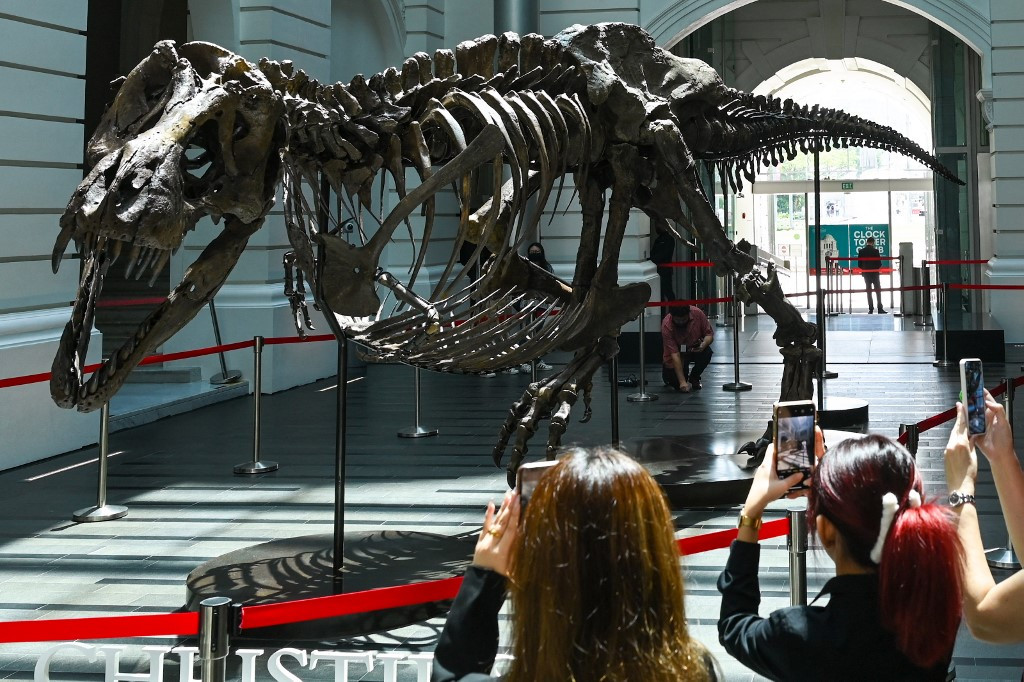Popular Reads
Top Results
Can't find what you're looking for?
View all search resultsPopular Reads
Top Results
Can't find what you're looking for?
View all search resultsBone study transforms understanding of dinosaur growth
Researchers said on Thursday they examined rings called cortical growth marks laid down annually inside the bones as these animals grew - akin to growth rings inside tree trunks - of three dozen theropod species.
Change text size
Gift Premium Articles
to Anyone
T
he dinosaur group called theropods included the largest land meat-eaters ever on Earth - up to the size of a school bus. But there also were theropods the size of a tabby cat and others of various dimensions, including beaked and toothless fruit eaters and some bizarre long-clawed species that redefine weird.
Scientists had long believed that these dinosaurs followed a uniform pattern in determining the body size of a species, whether gigantic or diminutive, with the rate of growth being the deciding factor - faster meaning bigger and slower meaning smaller. A new study adds to the evidence overturning that idea.
Researchers said on Thursday they examined rings called cortical growth marks laid down annually inside the bones as these animals grew - akin to growth rings inside tree trunks - of three dozen theropod species. Widely spaced rings indicate a speedier growth rate. Closely spaced rings indicate slower growth.
They found no common pattern underpinning body size. Some huge theropods grew quickly and stopped growing and some grew gradually over a longer period of time to reach the same size. Some small theropods grew rapidly and others slowly.
"Our paper overturns an axiom about dinosaur growth, suggesting that other groups should be studied systematically as well to see if our conclusions apply to other animals," said paleontologist Mike D'Emic of Adelphi University in New York, lead author of the study published in the journal Science.
"It's equally likely that an animal evolved larger body size by growing at the same rate for longer, rather than just growing faster. It is surprising and important to know that animals are just as likely to evolve to gigantic sizes at slow rates. That means they are smaller for longer - and are thus susceptible to predators for longer - and have longer lifespans," D'Emic added.
Tyrannosaurus, topping 40 feet (12 meters) long, was an example of a big and fast-growing theropod, with a large growth spurt in its teenage years - in some years quadrupling its body mass. Acrocanthosaurus, a bit smaller than T. rex, was an example of a big but slow-growing theropod.
Coelophysis, about 7 feet (2 meters) long, was a fast-growing smaller theropod. Xixianykus, one of the tiniest dinosaurs at 20 inches (50 cm) long, was a small and slow-growing theropod.
Spinosaurus, an immense semi-aquatic theropod up to 50 feet (15 meters) long, grew much more slowly than Tyrannosaurus. Mapusaurus, which reached about 38 feet (11.5 meters), grew even more quickly than Tyrannosaurus, while its similarly sized cousin Tyrannotitan had a growth rate like that of Spinosaurus.
"This is the first study to consider developmental mechanisms related to bone growth and body size variation in a large sample of predatory dinosaurs," said Ohio University evolutionary biologist and study co-author Patrick O'Connor.
"Although focused on theropod dinosaurs, the implications of this work should extend to most groups of land-living animals, allowing scientists to better constrain the interplay among genetics, development and environmental factors that ultimately give rise to the diversity of life around us," O'Connor added.
Theropods are known for their bipedal stance and a set of shared anatomical traits. The earliest theropods may have lived as long as 230 million years ago during the Triassic Period in South America. The group spread worldwide and lasted to the end of the age of dinosaurs when an asteroid strike triggered a mass extinction 66 million years ago during the Cretaceous Period.
Birds evolved from small feathered theropods during the Jurassic Period and are considered part of the theropod group, though they were not included in this study.
"Large birds grow very quickly, for example an ostrich can grow to a couple hundred pounds in a year or two," D'Emic said. "Crocodiles and alligators grow very slowly, taking several years to reach that same weight."











